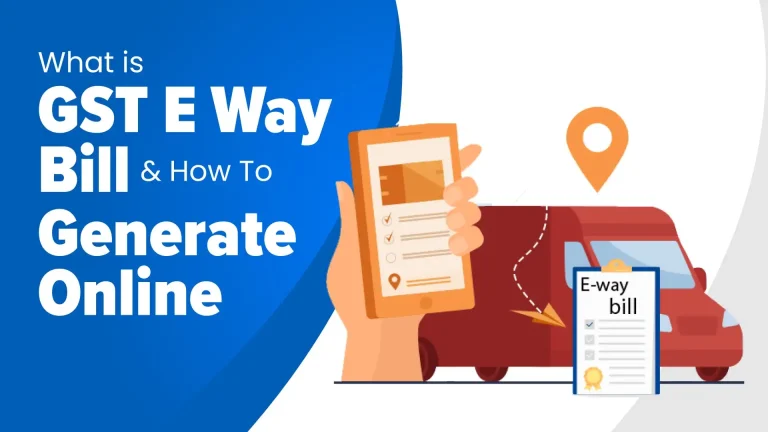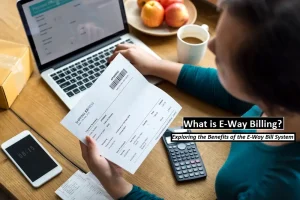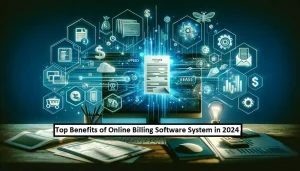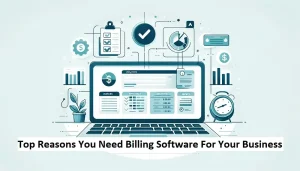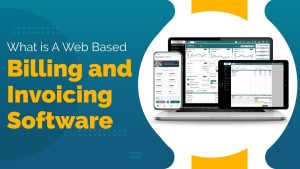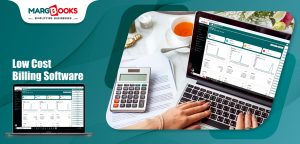The Goods and Service Tax was introduced by the Indian government as an initiative to facilitate tax compliance processes. Under this regime, the government authorities have additionally introduced, the E Way bill system. E-way or electronic way bills are electronic documents required for the transportation of goods that are worth over specified value both intrastate and interstate.
What is an E-way bill?
To figure out how to generate an E-Way bill, we first need to understand what is an E Way Bill. An e-Way bill is a mandatory permit, which is needed for the interstate conveyance of merchandise that worth more than Rs.50,000. An e-way bill requirement was made mandatory for inter-state movement from the 1st of April 2018 and for intra-state movement from the 25th of April 2018.
Here are some latest updates that were implemented on the E Way Bill regime:-
- Tamil Nadu Commencing on the 2nd of June E-Way bills became a requirement for the transportation of goods that are worth more than 1 lakh within Tamil Nadu only.
- West Bengal. Commencing on the 6th of June E Way bills became a requirement for the transportation of goods that are worth more than 1 lakh within West Bengal, only.
- Delhi. Commencing, on the 16th of June, E-Way bills became an obligation only for the movement of goods that are worth more than 1 lakh, within Delhi, i.e., intrastate.
Non-requirements for E-Way bills were implemented for unregistered customers and registered sellers.
An E-Way Bill entails its contents in two parts.
Part A includes:-
- Recipient’s GST Identification Number.
- PIN Code of the place where the goods are supposed to be delivered.
- Invoice or the Date of Issue.
- The value of the merchandise that is being conveyed.
- A 6-digit Harmonized System Nomenclature or HSN Code.
Part B:-
- Document Number of the transport in which the goods are being transported, which can entail, goods receipt number, railway receipt Number, airway bills number, and Bill of lading number.
Step-by-step process of an E-Way Bill Generation
An e-way bill generation can be a tedious task for a layman to perform, but here is a detailed step-by-step process describing how to generate an e-way bill.
Step 1: GST Portal login.
The first step in e way bill generation is to log in to the GST portal using your credentials. If you are a new user, you will have to register on the portal to proceed further.
Step 2: To the E-Way Bill
After that, Navigate to the “E-way Bill” section on the portal, under the “Services” tab
Step 3: E-Way Bill Generate.
In this section, you need to select the option to “Generate New E Way Bill”. This will take you to the E-Way Bill generation form.
Step 4: Filling of the Credentials.
In the E-Way Bill generation form, you are required to give all the fundamental details according to the prerequisites. Key data to be incorporated are:
– Invoice number: Enter the unique receipt or report number that is related to the transportation.
– Invoice Date: Determine the date on which the receipt was allotted.
– Value of Merchandise: Enter the sum value worth of the products that are being transported without taxes.
– Details of the transporter: Here you need to provide details of the carrier, that include the carrier ID, vehicle number, and mode of transportation.
– Party Details: This requires the GSTIN or UIN of both the shipper and the agent, along with their locations.
– Item Subtleties: Determine the details of the merchandise that are being shipped, including amount, depiction, and HSN code.
Step 5: Check your information.
After all the required credentials have been filled, re-verify the details to complete the process. Ensure to validate the information that you provided and make the required corrections, if needed, before you proceed further.
Step 6: Generate the E-Way bill and Download it.
After proper scrutiny of your information, click on “ Generate E-Way Bill” to generate an E-way bill electronically. A unique E Way bill number (EBN) and a QR code will be allotted to you.
Step 7: Print or Save the E-Way Bill
After the successful E-way bill generation, you can print it or save it electronically for future reference. The E Way bill has to accompany the goods during transportation, mandatorily in physical or electronic form.
Other optional cases for E-Way Bill Generation
- Update Your Transport Details.
In case of a change in your mode of transport or vehicle details, you are supposed to change after an E-Way bill system generation. This can be done by updating your transport details on the E-Way Bill GST portal, this ensures that the E Way Bill system remains cooperative throughout the transportation.
- Generating a Combined E-Way Bill
Businesses involved in the transportation of multiple consignments in one vehicle can generate a consolidated E-Way bill on the E-Way Bill portal. This facilitates compliance by merging multiple E-Way Bills into one single document.
How long is an E-Way Bill valid?
An E-Way validity bill depends upon the type of transportation of the merchandise.
For cargo apart from nondimensional ones, the e-way bill validity is one day if the given distance is less than 200 km every additional 200 km adds an additional day’s validity to the EWB.
Non-dimension cargo has its e way bill valid for one day if the given distance is less than 20 km every additional 20 km adds an additional day’s validity to the EWB.
When is an E-Way not required?
In certain situations, the merchandise is not mandated to generate an E-way bill. The said situation depends on the kind of goods and transactional value threshold.
Some goods that are laid down in the annexure to rule 138(14) of GST are liquified petroleum for household supply, kerosene oil, precious or semi-precious stones, jewelry, or silverware, etc. These and more goods not without certain exemptions are at liberty to use the E Way bill for their transportation.
E-way requirement exemptions are also applied to transactions that do not cross the mark of Rs. 50,000. In certain jurisdictions, intra-state movements of merchandise absolve an e-way bill requirement, especially for exchanges that happen under a recommended esteem limit. This exclusion expects to work on consistency for organizations participating in nearby exchange exercises.
Conclusion
E-Way bill generation is one of the core tasks for firms or individuals whose businesses are run by the transportation of their products. The step-by-step process detailed in this article will help you generate an e-way bill in no time.
Producing E-Way Bills on the GST gateway is a pivotal part of consistency for organizations engaged with the transportation of products. By following the bit-by-bit process illustrated in this article, organizations can guarantee consistent consistency with administrative necessities while working with the smooth development of products across state borders. Use Marg ERP to generate E-Way Bills hassle-free.
Also Read:
- What is E-Way Billing? Exploring the Benefits of the E-Way Bill SystemE-Way Billing is an essential component of the Goods and Services Tax (GST) system in India. An electronic waybill, commonly referred to as an E-Way Bill, is a document generated online for the transportation of goods worth more than a… Read more: What is E-Way Billing? Exploring the Benefits of the E-Way Bill System
- Top Benefits of Online Billing Software System in 2024Running a business smoothly is difficult. To keep up with the fast changes in how businesses work, it’s crucial to use smart tools. One such tool making a big difference is Online Billing Software System. This special software helps businesses… Read more: Top Benefits of Online Billing Software System in 2024
- Top Reasons You Need Billing Software For Your BusinessBefore going into a thorough discussion about the reasons why one should use billing software for his/her business, one should first know what a bill generator software is, how it works, and what benefits it brings to your business if… Read more: Top Reasons You Need Billing Software For Your Business
- What is A Web Based Billing and Invoicing SoftwareInvoicing has always been the major pain point for businesses, regardless of size. To most individuals, it may sound like an easy matter at first, but invoicing is beyond getting paid, it’s more about getting paid timely. According to a… Read more: What is A Web Based Billing and Invoicing Software
Frequently Asked Questions
Can two invoices be added in one E-Way Bill?
No, Multiple invoices cannot be combined to make one E-Way Bill. Every E-Way Bill is generated for a special consignment of goods and corresponds to a single document number. The details of an e-way bill pertain to a single transaction.
What is the limit of an E-Way Bill?
The e-way bill limit is the limit esteem above which the generation of an e-way bill becomes compulsory for the transportation of products under the Goods and Service Tax regime. The e-way bill generates limit is set to Rs. 50,000 excluding taxes.
Is it possible to cancel or update an E-Way bill, once it has been generated?
Indeed, e-way bills can be canceled or altered under particular conditions, like changes in transportation or the cancelation in the supply of products. Keeping in mind that, there are explicit methods for canceling or changing e-way charges, which clients need to follow.
Are there any cases in which an E-Way can be negotiated?
Yes, certain classifications of merchandise, exchanges under a predetermined worth limit, and explicit classes of organizations might be excluded from the prerequisite of creating e-way charges.

